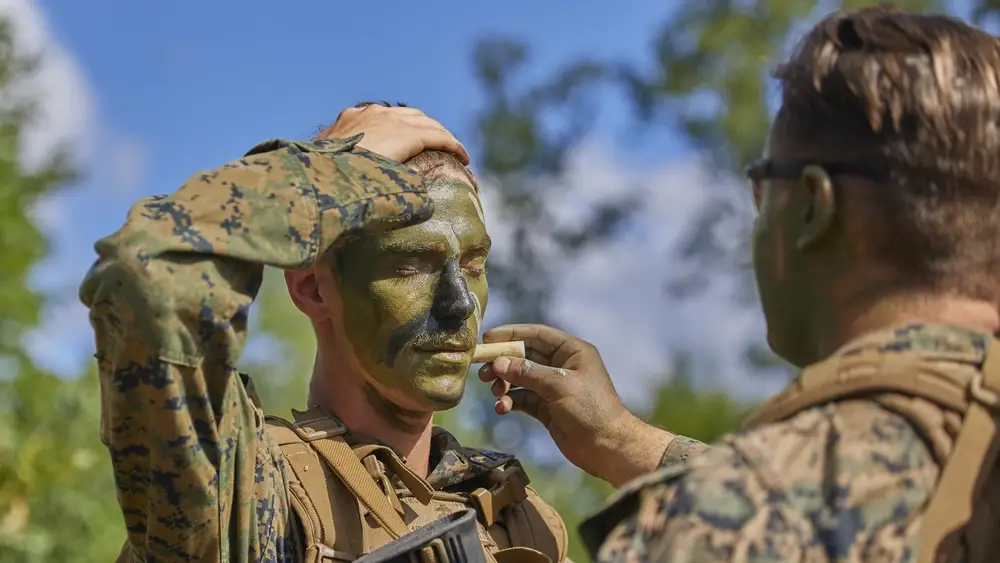The US military’s first digital camo was a weird one

U.S. Marine Corps photo by Lance Cpl. Leslie Alcaraz. (Wikimedia Commons)
SUMMARY
As the US military entered the 21st century, its uniforms went to digital camo. The Desert Combat Uniform and Battle Dress Uniform, which were worn by all branches, were replaced with new service-specific pixelated uniforms. The Marine Corps adopted MARPAT, the Army got UCP (ACU is the uniform, UCP is the pattern), the Air Force went to a digital tiger stripe on their ABU, and the Navy adopted the often hated NWU Type I. While these digital camouflage patterns came to represent the military at the turn of the century and into the Global War on Terror, they were not the first digital camo.
A major battlefield technology that evolved during the Cold War was night vision. Although relatively primitive at the time, infrared optics allowed a soldier to easily pick out enemy troops in the dark. In 1967, the Army decided to create a new type of camouflage to defeat Soviet night optical/observation devices.
In the midst of the Cold War, night vision technology advanced rapidly. As a result, solving the problem of how to beat it proved to be quite a challenge to the Clothing Equipment and Materials Engineering Laboratory at Natick, Massachusetts. Testing continued throughout the 70s with emphasis placed on the arid desert environment, where warm-bodied troops stood out in the cold nights like sore thumbs under NODs.
In the early 1980s, the military finally introduced the Desert Night Camouflage pattern. It featured a base color over-dyed with two screens to form a two-color grid pattern with irregular blots. With its odd camouflage, DNC supposedly lived up to its name and was optimized for concealing troops from enemy NODs in the desert. The pattern was used on a parka and trousers intended to be worn at night over the Desert Battle Dress Uniform, also known as 6-color desert or chocolate chips.
It took nearly a decade for DNC to be put to the test in combat. Beginning in 1990, soldiers, Marines, and Special Forces were issued DNC for use in Desert Shield and Desert Storm. Initially, the uniform was well-received because it kept the troops warm during the cold desert nights. However, the camouflage itself was outdated by then and no longer effective against the more advanced NODs being fielded in the late 20th century. In fact, one Marine scout sniper section reported that DNC was more easily visible than the DBDU or winter overwhites when viewed through AN/PVS-5 night-vision goggles.
Following this failure, DNC was discontinued in 1991. Still, the camouflage was historical for the military. It was the first pattern designed to defeat artificial imaging technology, the first pattern designed specifically for nighttime use, and of course, the first digital camo. Today, the military uses infrared and thermal treatments on uniforms to reduce their signature when viewed through NODs. Although DNC was ultimately a military failure, the unusual pattern has seen a resurgence in popularity on the private market in both outdoor and fashion circles.
SHARE
